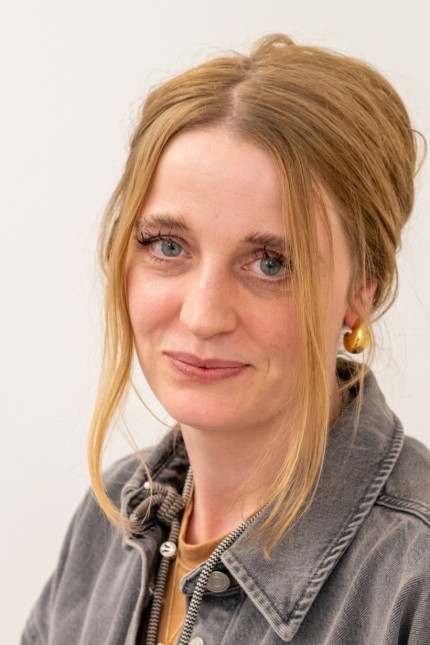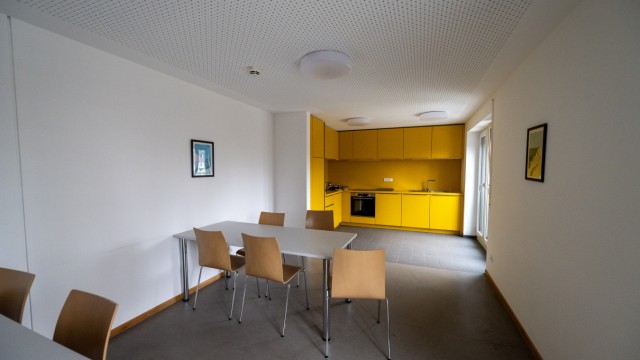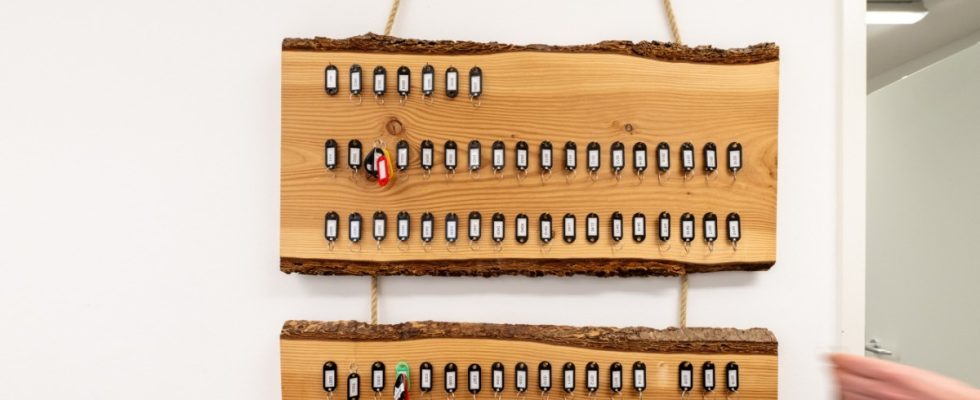The “beginning of my unhappy existence,” as Eva Leyerer puts it, dates back several years before the day on which an eviction notice forced her out of her apartment. She previously earned good money as a self-employed person for a long time, says the woman with the friendly smile, whose eyes dart back and forth uncertainly during the conversation. But then her depression got worse and her mental illness made it impossible for her to work. “No more money came in,” she says, “and I slipped deeper and deeper into poverty.” Until at some point she can no longer pay her rent and the bailiff comes – that is 2018.
From that day on, Eva Leyerer – the now 45-year-old’s real name is different but wants to remain anonymous – is “homeless”, as it is officially called. An estimated 10,000 people in Munich share this fate, and the number is rising. The spectrum ranges from an addicted man who has been living on the streets for years to a young family whose apartment was evicted because of their own needs. The city is responsible for homeless people and is required by law to accommodate these people. Until 2017, this happened in hotels, guesthouses and accommodations, where residents often had neither their own bathroom nor their own kitchen and sometimes not even their own key to their room.
This environment alone makes it difficult to find a new apartment. In addition, in Munich there is a mixture of high rents and insufficiently subsidized housing, which means that homeless people are often dependent on accommodation for months, if not years. In order to improve the situation of these people, the city council decided on a new concept in 2017 with so-called flexi homes. They usually consist of 100 to 200 apartments with bathrooms and kitchenettes as well as common rooms. “The special equipment allows a situation to be created during the long wait for an apartment that feels largely like living for the people being accommodated,” says the social department. “In addition, the city’s dependence on the commercial accommodation market will be reduced.”
The Arbeiterwohlfahrt operates two flexi homes on Boschetsrieder Straße near Südpark.
(Photo: Catherina Hess)
Two of the flexi homes that were built according to the city council resolution are on Boschetsrieder Straße near Südpark. And Eva Leyerer now also lives there, who lived in various accommodations after the eviction before she got one of the apartments in Obersendling in 2020. “Here I finally have my own space again. That’s incredibly important,” says the 45-year-old, who lived in two- and four-person rooms with other homeless people before moving to the Flexi Home. Now she has her own kingdom – consisting of a kitchen, bathroom and living room in 18 square meters.
Your apartment is in a type 2 flexi home, which, according to the social services department, is intended for “rentable homeless households”. In principle, these people, couples and families could move into an apartment as soon as they find one. The situation is different for residents of Type 1 Flexi Homes. According to the social services department, the need for advice and support is much greater there, which is why there is more social-educational support and a security service available around the clock.

Many residents are mentally ill and many have a migrant background, says manager Verena Büttner.
(Photo: Catherina Hess)
According to the social services department, the goal in such a flexi home is “to develop rentability”. However, this is often a difficult undertaking, admits Verena Büttner. “You have to be honest and say that we don’t see many people being able to move into an apartment in the medium term.” Büttner manages the two type 1 and 2 flexi homes at Südpark, which opened in 2020 and are operated by Arbeiterwohlfahrt (Awo) München-Stadt. She sees the houses as “a place where people are safe from a fatal situation and don’t sit on the street.” And, according to the social worker: “a place where people can reorganize themselves.”
There is no typical resident in a flexi home, says Verena Büttner as she tours the house. “The people here are completely mixed – from old to young, from academics to unskilled.” However, there are two recurring similarities. “Many people are mentally ill, often addicted, and therefore unable to work,” says the social worker. “And many have a migrant background, work in precarious jobs and have a particularly difficult time on the housing market.”

The common room doesn’t give the impression that people often sit together here.
(Photo: Catherina Hess)
On her way through the Flexi-Home, Büttner walks through a long corridor from which the apartments branch off. There are no pictures hanging on the wall here, there are only nameplates on a few doors, and the common room also gives the impression that people don’t sit together here very often. Everything seems anonymous, almost sterile. And yet, Eva Leyerer emphasizes that her current apartment is far better than the accommodations in which she previously lived. “It’s good to be here. And I think the environment is great.”
So far there is space for 1,250 people in flexi homes
According to Verena Büttner, there is actually a waiting list for the Flexi Home at Südpark. This may also be because the town hall has so far fallen behind its expansion plans. In 2017, the city council decided to create 5,000 beds in flexi homes within eight years. According to a spokesman for the social affairs department, there are currently only nine such houses for around 1,250 people. Regarding the question of the targeted 5,000 beds, he says: “The achievement of the target is ambitious, but the target number is basically being adhered to.” A problem in the search for locations is “the lack of building space and cautious offers from private investors,” said the authority spokesman. After all: The city council recently decided on five new flexi homes – in Freiham, Fürstenried, Moosach and two houses in Trudering.
Flexi homes have established themselves in the city’s homeless assistance system “and have become a flagship,” stated the social affairs department in 2022 when updating the program. At the same time, it was stated that the facilities should only serve for “temporary accommodation” – and “if possible only for up to six months”.
But that often remains wishful thinking, as is the case with Eva Leyerer. She has been living here at Südpark for almost four years now, and she has been looking for an apartment for just as long in vain. What does the apartment in the flexi home mean to her? “For me, this is my home,” says Eva Leyerer before correcting herself. “Or rather: my poor home.”

